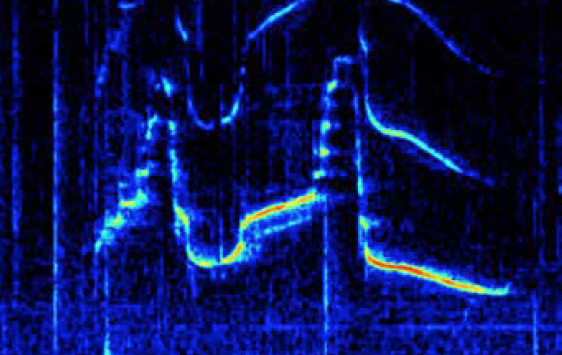Did you know that bottlenose dolphins develop individually distinctive signature whistles that they use to maintain group cohesion?
Unlike the development of identification signals in most other species, signature whistle development is strongly influenced by vocal learning. This learning ability is maintained throughout life, and dolphins frequently copy each other’s whistles in the wild.
It’s been hypothesized that signature whistles can be used as referential signals among conspecifics — as names — because captive bottlenose dolphins can be trained to use novel, learned signals to label objects. For this labeling to occur, signature whistles would have to convey identity information independent of the caller’s voice features. However, experimental proof for this hypothesis has been lacking.
SDRP studies have demonstrated that bottlenose dolphins extract identity information from signature whistles even after all voice features have been removed from the signal. Thus, dolphins are the only animals other than humans that have been shown to transmit identity information independent of the caller’s voice or location!
- From: Janik, V.M., L. S. Sayigh, and R. S. Wells. 2006. Signature whistle shape conveys identity information to bottlenose dolphins. Proceedings of the National Academy of Sciences of the United States. 103 (21) 8293-8297; https://doi.org/10.1073/pnas.0509918103
Explore More: Want to know what dolphins sound like? You can learn more about the individual dolphins that live in Sarasota Bay and hear their voices in our Meet the Dolphins section!





